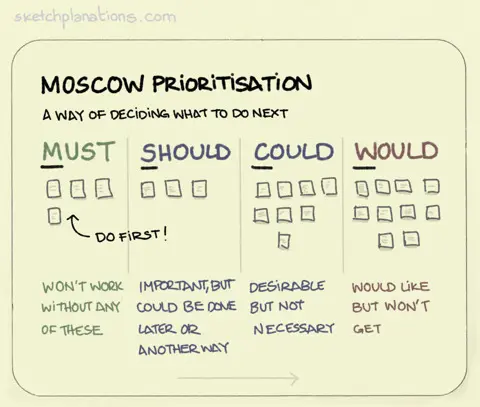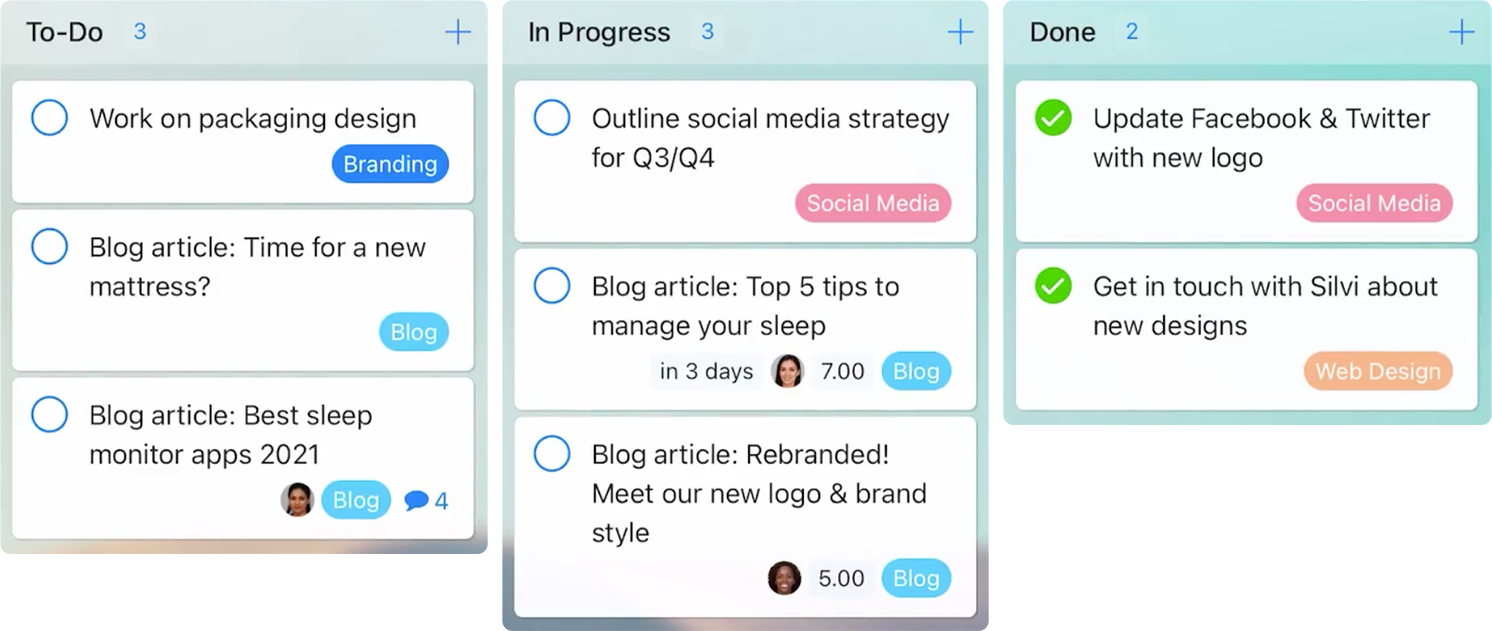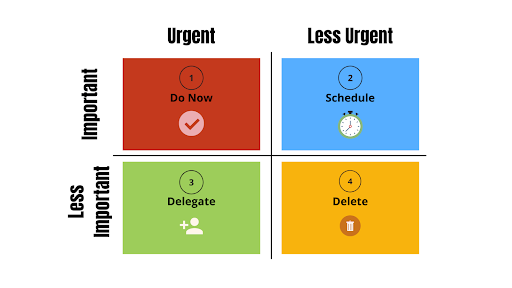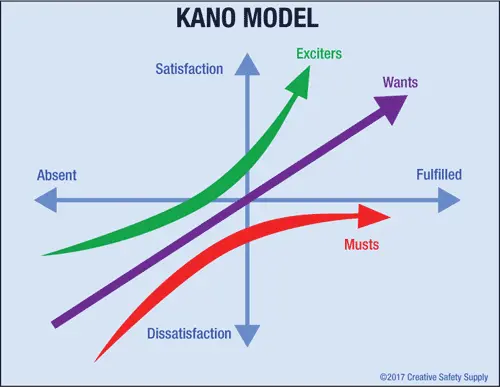
Have you ever felt like you’re whirling plates? Of course, we’re not talking literally, unless you turn out to be a spectacular employee. Instead, we’re touching on those upsetting life moments, mainly at worksites, when you feel that you have countless stuff to complete right away and you’re required to keep all these things in balance. As a result, your task prioritization skills begin to buckle, and you quickly become overwhelmed.
You can’t withstand seeing even one plate set down because that will cause a disastrous domino effect, leading to several smashed ‘plates.’ To ensure all the ‘plates’ remain whirling, you have to be aware of the specific path to focus on and when to focus on it.
Task prioritization is something that everyone knows they should always do. However, it’s ultimately another matter to implement a working system. Therefore, let’s put down those plates for a few minutes and find precisely the best way to prioritize – including when and what needs prioritizing.
This article will help you put down those plates for a few minutes and find precisely the best way to prioritize – including when and what needs prioritizing.
Here are some of the things you’ll learn from this article:
- What makes a master prioritizer
- How these prioritization techniques make you a better prioritizer
- What you should do if none of the techniques listed meet your task requirements
The Prioritization Science
Some individuals have natural management/organization talent, but that’s not the case for others. If you appear in the latter scenario, the project/task prioritization skill may appear to be an art form. However, the truth remains that this skill focuses more on the science side.
Whenever we witness the prioritization master at work – gliding from one project to another with little hassle and without breaking out in a sweat – it may appear like magic. However, you can logically break the process down.

Also, note that reliable prioritization stands out as compensation. Besides feeling like a pro on everything that you’re doing, how you’re doing it, and when you’re doing it, effective prioritization also gives you much more breathing room throughout the day.
As a master prioritizer, you can:
1. Stay Concentrated on the Long-Term Objectives
To-do lists work well but are not as exceptional as prioritized task lists. After all, it’s not a challenge to randomly shift from one project to another, especially when you have an unstructured to-do list. With clearly highlighted priorities, you’ll be sure that you’re handling the right stuff at the expected time to achieve your long-term objectives.
2. Reduce Stress and Prevent Burnout
Are you aware that stress costs the USA 300 billion USD every year in losses because of absenteeism, diminished productivity, and accidents.? With this amount on the line, it’s astonishing that most leaders aren’t concentrated on teaching their team members reliable prioritization techniques. Even the uncomplicated prioritization frames can minimize worksite pressure and ensure the staff doesn’t burn out.
3. Remove Wasted Time and Enhance Time Management
A poor time management strategy can also damage a company. Just think of the time you’ll lose if workers don’t know what tasks to handle next and why they should focus on them. Again, effective prioritization plays an indispensable role in solving this issue stylishly and putting forward much-required structure/order to the stressful day.
4. Avoid the ‘Firefighter’ Feeling Effectively
Have you experienced those working days where you run from one project to another or solve problem after problem? If yes, then you already understand the firefighter’s emotion. The issue is that handling crucial projects in this behind-time technique is not profitable to top-rated organizations, and it can cause even more pressure. By implementing a reliable prioritization technique, you’ll be sure that you have left the firefighting mood to the pros.

Task Prioritization Techniques
Now that you’re familiar with the definition of prioritization, let’s focus on the critical task prioritization techniques:
The Hundred Dollar Method
The Hundred Dollar Method plays an indispensable role in prioritizing things with several stakeholders or a group. In this task prioritization technique, each individual within a cluster is assigned $100 (hypothesis) and is requested to divide it among the tasks at hand. They can distribute these dollars uniformly or go for the weighted distribution method, where they can prioritize specific projects over others.
Imagine a scenario that focuses on prioritizing 5 things. If individuals believe each project has a matching value, they can allocate $20 to each item. Or, they can assign one item with $40 and $10 to another one until they assign the entirety of their “budget”. Eventually, you can add up the allocated money for every item, which would finally become the most rated project.
MoSCoW Technique

The MoSCoW technique plays an indispensable role in project management, software development, management, and business analysis to understand each requirement’s importance to shareholders.
This task prioritization method features four priority sets: “WON’T have,” “COULD have,” “MUST have,” and “SHOULD have.” These labels make it easy for shareholders to prioritize each need in the most cross-sector form.
- MUST Have or “Mandatory” – Features that are essential and non-negotiable for the project’s completion.
- SHOULD Have or “High Priority” – The should-have initiatives are important to the task, but they are not critical. If omitted, the strategies will have minor consequences on the outcome of the task.
- COULD Have or “Preferable But Not Necessary” – The could-have drives are not necessary to have, but they are preferable to have in your project. If omitted, the task and team members will keep working as expected.
- WOULD Have or “You May Postpone Them for Future Implementation” – These will-not-have drives don’t fall under the team’s current priorities, but could be implemented at a later date should time and resources allow it..
MoSCoW is mainly applied with the timeboxing technique, where a timeframe is set so that the concentration remains on the critical needs. Therefore, this method is involved primarily in agile hardware creation approaches.
Eat the Frog
The Eat the Frog technique is a task prioritization method that should not be taken too literally. Instead, it’s a system that relies on a quote by Mark Twain. He argued that “if you have the responsibility to consume a frog, it makes sense or works great if you take that as the first-morning step.” In the management world, this quote translates to handling complicated/big-sized projects first before shifting to time-sensitive or “less important” assignments.
When starting your day, critical projects tied to top-most OKRs/goals and focusing on the highest function need to appear first on your priority list. After eating that day’s frog, you can concentrate on the other assignments depending on different factors, like stress level and timeframes, because you have already handled today’s critical task.

Approach your tasks your way.
Task prioritization made simple with Zenkit Projects.
Get started for free now.
Eisenhower Decision Matrix

The Urgent-Important Matrix or Eisenhower Decision Matrix opens the process by classifying the projects into four quarter-circles, depending on their importance, urgency, importance & urgency, or neither. As World War II’s top-rated general and then President of the United States, Dwight D. Eisenhower stood out in making critical decisions faster and created this technique to assist him.
With this approach, it is easy to determine task prioritization by highlighting the urgent & important things to focus on now; what you require to program for important things but not the urgent ones; the not important but urgent things you can delegate; and the not urgent and not important things you can delete. As a result, it’s an exceptional tool you can rely on to prioritize projects, decide faster, and remain organized.
The Kano Model

The Kano Model relies on different user satisfaction levels with the product’s characteristics and habits. Noriaki Kano (a Japanese analyst) is the creator of this method, and he described this model clearly in the 1980s.
You can implement this model in different ways. One version offers dividing backlog stuff by the Reverse, Indifferent, ‘Must-be,’ ‘Attractive,’ and ‘One-Dimensional’ criteria. This technique relies on end-user satisfaction needs, and it entails conducting user interviews and surveys with usability testing before you prioritize the tasks.
- Must-be elements – Users consider the items working only if they include these elements.
- One-dimensional elements don’t appear under the ‘must-have’ work elements, but they do stand out as extremely helpful to consumers.
- Attractive elements focus on adding more satisfaction. They are mainly unlooked-for features but stand out as ‘nice-to-have.’
- Indifferent elements feature the smallest possible aftermath on consumers’ satisfaction levels, and they rarely have value.
- Reverse elements stand out as the most irritating, and they feature a negative impact on user satisfaction levels.
Relative Priorities
In most cases, the above techniques help, but how do you arrange projects with top priority? What if several projects fall under the critical category but not the urgent one? Or, what if the projects have must-have results?
Which method can you rely on to prioritize projects with top priorities? Which task prioritization technique can you rely on in this case?

Relying on relative priority remains the perfect and straightforward answer in this case. ‘Relative’ priority functions by measuring each task’s importance and comparing it with other projects under the priority record. For instance, assume you’re focusing on ten things. Allocate the numbers 1-10 to each. In a moment, you’ll have noted the highest and lowest priority projects.
But which technique do you rely on to identify the more important task? You can make this possible with two easy-to-follow ways based on dependencies and due dates. The uppermost priority goes to projects with earlier deadlines. Besides this, you need to complete projects that stop other tasks from being handled first.
Final Thoughts
Task prioritization will always be essential. However, keep in mind to stay clear-sighted about the projects you can handle with less hassle each day. Expect to have a successful and productive day if you use an effective prioritization technique.

Hitting the day’s end and realizing that you have completed all critical tasks is an unparalleled feeling you always want to experience. However, it’s difficult to achieve this every day. Projects consume more time than expected, so prepare for interruptions when handling their tasks. Also, it’s normal for days to be filled with meetings and talking.
Therefore, while it’s essential to understand the most straightforward approach to prioritizing your critical tasks, you should also remain clear-sighted on the projects you can complete successfully. With this focus, you’ll end each day feeling great about your daily progress and feel relaxed and comfortable while on your well-deserved break.
About the Author: Rithesh is the co-founder of Acowebs, an online store for eCommerce plugins with 15,000+ satisfied customers across the globe. Having a rich experience of 15+ years in Digital Marketing, Rithesh loves to write up his thoughts on the latest trends and developments in the world of IT and software development.
FREE 20 MIN. CONSULTATION WITH A PROJECT MANAGEMENT EXPERT
Wanna see how to simplify your workflow with Zenkit in less than a day?
Book a Live Demo




Leave a Reply